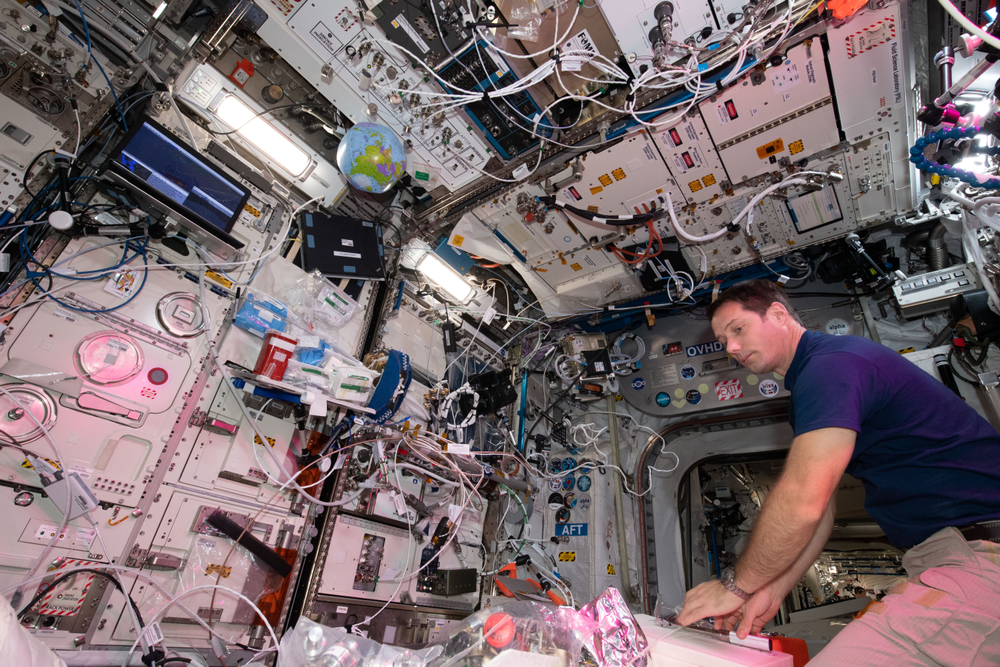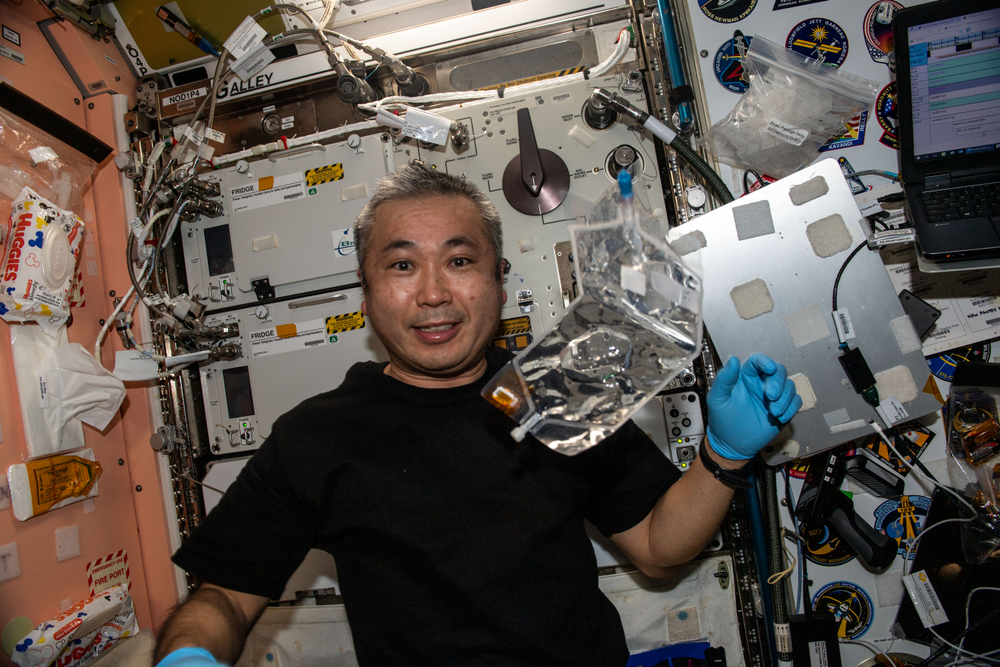Station Science Top News: Sept. 1, 2023
Researchers present a comprehensive analysis of flow pattern and pressure drop data in two-phase flow (gas and liquid simultaneously) through packed bed reactors (PBRs) in microgravity. PBRs are widely used for many chemical and biological reaction and separation processes because of their low power consumption, compact size, versatility, and reliability, and they are viable for uses on future deep-space missions.
The Packed Bed Reactor Experiment (PBRE) sought a fundamental understanding of how PBRs perform in microgravity. Space station water recovery, fuel cells, and other equipment currently use these systems, but they are not designed to handle liquid and gas at the same time. Examining two-phase flow in microgravity could lead to more efficient and lightweight thermal management and life support systems for future missions.

***
Researchers report agreement among three different ways to measure bubble size and distribution in wet foams in microgravity. Increased understanding of their behavior could help optimize the use of these foams in manufacturing on Earth and for fighting fires and cleaning water in space.
FSL Soft Matter Dynamics - FOAM investigates bubble size and rearrangement dynamics for wet foams. Microgravity is essential to the study of wet foams because they cannot be stabilized on Earth due to interference from drainage in gravity. Wet foams are dispersions of gas bubbles in a liquid and include products such as detergents, foods, and medicines.

***
Researchers used genomic analysis to identify five spaceflight-specific bacteria from the International Space Station water recovery system. Knowing the bacterial species present in the station’s non-potable water could help investigators develop methods to control these microbes and protect crew health and safety.
ISS Internal Environments evaluates the air, water, and surfaces of ISS to establish a baseline of contaminants and support the development of systems to maintain crew and spacecraft health on future missions to the Moon and Mars. Researchers recorded the genetic sequences of the bacteria in databases for use in future studies. The five species identified are Ralstonia insidiosa, Burkholderia multivorans, Cupriavidus metallidurans, and Methylobacerium fujisawaense.








